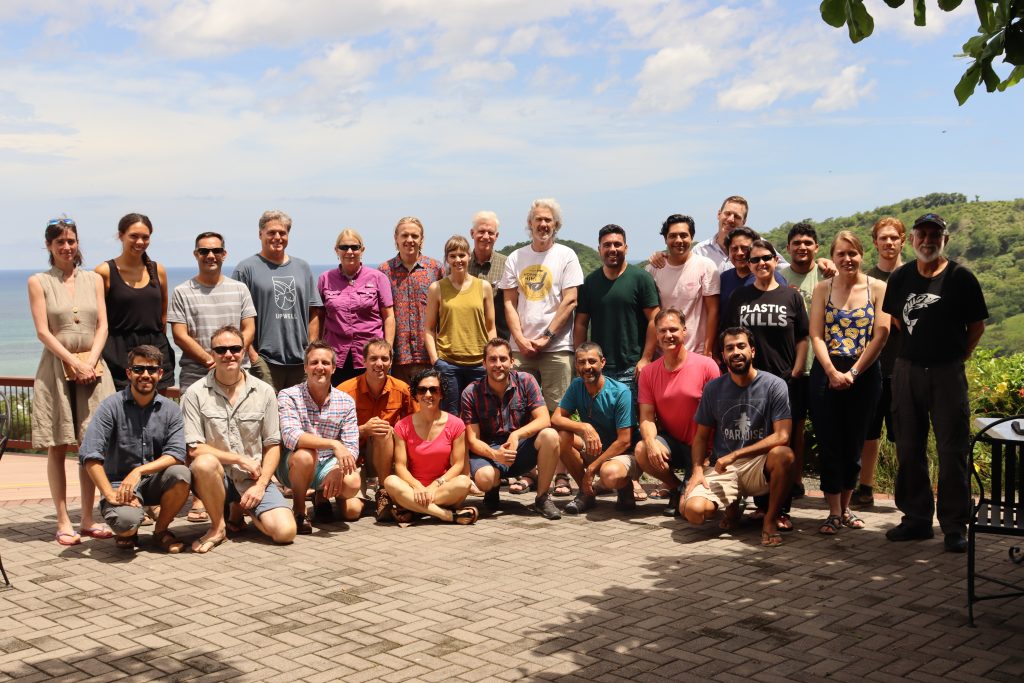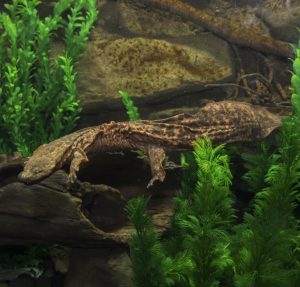Nick’s Churchill Fellowship: Costa Rica & US … and the Snot Otter!
I am currently in the last stages of my incredible Churchill Fellowship adventures. I have seen many wonderful things, walked a lot and learnt about all aspects of translocations and conservation more generally. I also met some inspiring people! This blog covers my time in Costa Rica and the US.

Conservation Translocation class of 2019, Costa Rica
Our lives are full of decisions; with the vast majority considered no-brainers, or with inconsequential outcomes. What shall I have for breakfast? Shall I go to bed or watch another over of the Ashes (maybe not if Ben Stokes is batting!)?
Yet, some are worth thinking about more critically, and require knowledge to inform the decision. Conservation translocations require a series of, at times very difficult, decisions to move forward and maximise the likelihood of success. That was the message from IUCN Conservation Translocation Training in Costa Rica. The training was presented by pre-eminent reintroduction ecologists and facilitators – Axel Moehrenschlager, Doug Armstrong, John Ewen, Stefano Canessa and Jamie Copsey – who provided theory and practical examples on how to plan, implement and evaluate translocation efforts.
I had the opportunity to discuss practicalities of translocations, learn about some cool species (Hihi, Guam Kingfisher, Great Green Macaw, Western Swamp Turtle and sea turtles (and even made one of those ‘inconsequential’ decisions to sing karaoke in Spanish …).
There was a sense of optimism that, despite the challenges faced, well-planned and implemented translocations can help to conserve species in the face of major environmental change.
Costa Rica is an impressive country. It maintains nearly 6% of the world’s total biodiversity, is run almost exclusively on renewable energy, and has not effectively had an army since 1949. The countryside is amazingly green and lush and the people were very friendly (even whilst watching Costa Rica versus Mexico at a pub). I highly recommend it as a travel destination, although the 28 hours of travel to get there is a challenge.
Following the IUCN training, I left Costa Rica for the US to explore how translocations have influenced the recovery of two small fish species: the internationally endangered Rio Grande Silvery Minnow in Albuquerque, and the Oregon Chub in Portland, Oregon and surrounds. The conservation of both species has been managed under the ‘Endangered Species Act’, which actually provides a legislative framework to protect species.
Albuquerque was experiencing a hot, dry spell reminiscent of summertime in Adelaide. For Rio Grande Silvery Minnow, management under the Endangered Species Act has enabled to a long-term commitment by more than 14 partner organisations to adaptively conserve the species. Up to 2 million fish were produced, across three facilities (ranging from a conventional hatchery to a more natural refugium), for reintroduction into former habitats. Yet, despite this effort, the species continues to struggle in the wild, largely because 95% of the water than once flowed out to sea in Texas is extracted from the system (ironically, the Rio Grande was experiencing a 1 in 20-year flood when I visited!). Thus, there simply isn’t the habitat left to support large populations of the species; the ecologists and managers I met referred to current efforts as a ‘band aid’ solution that allows the species to just persist, but not recover.

(left) Alison Hutson, Douglas Tave and Louie Toya from the Los Lunas Silvery Minnow Refugium; (middle) Brian Bangs and team at a Oregon Chub site; and (right) Zac Loughman and West Liberty University team out sampling crayfish
The news was much more positive in Oregon, where the efforts of a small band of ecologists, including Brian Bangs (who was my tour guide), have been instrumental in the delisting of Oregon Chub. That’s right, the removal of the species from the Endangered Species Act, a first for a freshwater fish in the US, ensuring that is no longer under threat of extinction. There were only nine populations in 1993, but reintroductions and natural recovery have ensured that more than 80 populations (with an estimated abundance of more than 150,000 fish) now persist. Very encouraging and inspiring stuff.
A short visit to New York allowed me to visit Don Boyer, the Curator of Herpetology at the Bronx Zoo, to explore the captive maintenance and breeding of rare frogs and the Eastern Hellbender, locally known as the Snot Otter – one of my favourite animals!

What’s in a name? The Eastern Hellbender, also known as the Snot Otter, or ‘Old Lasagna Sides’ is probably the most awesome amphibian you could meet!
I then headed to West Virginia, of ‘Take Me Home, Country Roads’ by John Denver fame, to visit Zac Loughman from West Liberty University. West Virginia is coal and Trump country (both I didn’t know) and Zac is a force of nature. He has established a crayfish-dedicated laboratory (with more than 16 post-graduate students), which is helping to better understand and conserve freshwater crayfish across the region. He has instigated captive breeding and reintroductions for a number of threatened species. Lastly, he has species of freshwater crayfish named after him! My three-day visit included an overnight tour of West Virginia (where we went spotlighting for leeches with world-leading expert Anna Phillips from the Smithsonian Institution). It was a case of too much freshwater crayfish (or Crawdads as he calls them) ‘chat’ is never enough!
I managed to avoid the travel experiences of jet-lag and food poisoning, but thanks to American Airlines, my luggage took a 10-day holiday independently of me before it was returned!
So, it’s been educational and fun and I remain incredibly grateful for the support of the Churchill Trust, Henry Rischbieth and family who have sponsored me through their Fellowship, and to the people I have visited who have been very generous with their time.
Next blog will cover my travels in England, Ireland and Sweden.
Cheers,
Nick.
